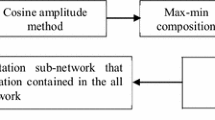Abstract
Air pollution monitoring networks are the primary tools for measuring, managing and assessing air quality. However, these networks need considerable financial resources due to expensive devices and analyses, as well as such issues as the likely redundancy in the number of samples. The primary objective of this study was to identify possible information and equipment redundancies in Turkish monitoring networks. Thus, it is expected that the results of this study may help reduce air pollution monitoring expenses and increase monitoring efficiency. For this purpose, the Fuzzy C-Means clustering algorithm and time series analyses were used. This study has two novelties. First, this is the first study to be conducted for this purpose in Turkey. Further, Dickey–Fuller test statistics and model parameters have not been used as clustering variables before. Thus, it is expected that both stochastic behavior and concentration levels of PM10 time series will be reflected simultaneously, and similarities among monitoring stations will be better identified.







Similar content being viewed by others
References
Bezdek JC (1981) Pattern recognition with fuzzy objective function. Plenum Press, New York, p 256p
D’Urso P, Maharaj EA (2009) Autocorrelation-based fuzzy clustering of time series. Fuzzy Sets Syst 160:3565–3589
D’Urso P, Maharaj EA (2012) Wavelets-based clustering of multivariate time series. Fuzzy Sets Syst 193:33–61
D’Urso P, Lallo DD, Maharaj EA (2013) Autoregressive model-based fuzzy clustering and its application for detecting information redundancy in air pollution monitoring networks. Soft Comput 17:83–131
D’Urso P, Giovanni LD, Maharaj EA, Massasi R (2014) Wavelet-based self-organizing maps for classifying multivariate time series. J Chemom 28(1):28–51
D’Urso P, Giovanni LD, Massari R (2015) Time series clustering by a robust autoregressive metric with application to air pollution. Chemom Intell Lab Syst 141:107–124
D’Urso P, Massasri R, Giovanni LD, Cappelli C (2016) Exponential distance-based fuzzy clustering for interval-value data. Fuzzy Optim Decis Making. doi:10.1007/s10700-016-9238-8
Dickey DA, Fuller WA (1979) Distribution of the estimators for autoregressive time series with a unit root. J Am Stat Assoc 74:427–431
Giri D, Murthy VK, Adhikary PR, Khanal SN (2007) Cluster analysis applied to atmospheric PM10 concentration data for determination of sources and spatial patterns in ambient air-quality of Kathmandu Valley. Res Commun 93(5):684–688
Ignaccolo R, Ghigo S, Giovenali E (2008) Analysis of monitoring networks by functional clustering. Environmetrics 62:672–686
Iizuka A, Shirato S, Mizukoshi A, Noguchi M, Yamasaki A, Yanagisawa Y (2014) A cluster analysis of constant ambient air monitoring data from Kanto Region of Japan. Int J Environ Res Public Health 11:6844–6855
Lau J, Hung WT, Cheung CS (2009) Interpretation of air quality in relation to monitoring station’s surroundings. Atmos Environ 43:769–777
Lavecchia C, Angelio E, Bedogni M, Brevetti E, Gualdi R, Lanzani G, Musitelli A, Valentini M (1996) The ozone patterns in the aerogical basin of Milan (Italy). Environ Softw 11:73–80
Lu H-C, Chang C-L, Hsieh J-C (2006) Classification of PM10 distributions in Taiwan. Atmos Environ 40:1453–1463
Morlini I (2007) Searching for structure in measurements of air pollutant concentration. Environmetrics 18:823–840
Pal NR, Pal K, Keller JM, Bezdek JC (2005) A possibilistic Fuzzy c-Means clustering algorithm. IEEE Trans Fuzzy Syst 13(4):517–530
Pires JCM, Sousa SIV, Pereira MC, Alvim-Ferraz MCM, Martins FG (2008) Management of air quality monitoring using principal component and cluster analysis—Part I: sO2 and PM10. Atmos Environ 42:1249–1260
Saksena S, Joshi V, Patil RS (2003) Cluster analysis of Delhi’s ambient air quality data. J Environ Monit 5:91–499
Xie XL, Beni GA (1991) A validity measure for fuzzy clustering. IEEE Trans Pattern Anal Mach Intell 13(8):841–847
Acknowledgments
The authors would like to thank the Faculty of Science, the Department of Statistics, Mugla Sıtkı Koçman University, for enabling the authors to complete this work.
Author information
Authors and Affiliations
Corresponding author
Additional information
Editorial responsibility: M. Abbaspour.
Rights and permissions
About this article
Cite this article
Dincer, N.G., Yalçin, M.O. Revealing information and equipment redundancies in air pollution monitoring networks in Turkey. Int. J. Environ. Sci. Technol. 13, 2927–2938 (2016). https://doi.org/10.1007/s13762-016-1118-9
Received:
Revised:
Accepted:
Published:
Issue Date:
DOI: https://doi.org/10.1007/s13762-016-1118-9




